-
 Bitcoin
Bitcoin $108,562.4295
0.46% -
 Ethereum
Ethereum $2,533.9553
1.52% -
 Tether USDt
Tether USDt $1.0002
-0.01% -
 XRP
XRP $2.2542
2.23% -
 BNB
BNB $662.4567
1.48% -
 Solana
Solana $151.4114
3.48% -
 USDC
USDC $0.9999
0.00% -
 TRON
TRON $0.2860
0.91% -
 Dogecoin
Dogecoin $0.1685
3.72% -
 Cardano
Cardano $0.5809
1.63% -
 Hyperliquid
Hyperliquid $39.2916
1.85% -
 Sui
Sui $2.8874
0.85% -
 Bitcoin Cash
Bitcoin Cash $496.5801
2.72% -
 Chainlink
Chainlink $13.3582
2.48% -
 UNUS SED LEO
UNUS SED LEO $9.0279
0.07% -
 Avalanche
Avalanche $18.0773
2.30% -
 Stellar
Stellar $0.2426
3.05% -
 Toncoin
Toncoin $2.9086
6.01% -
 Shiba Inu
Shiba Inu $0.0...01170
2.97% -
 Hedera
Hedera $0.1587
3.47% -
 Litecoin
Litecoin $87.4596
1.13% -
 Monero
Monero $317.0425
0.73% -
 Polkadot
Polkadot $3.3778
1.90% -
 Dai
Dai $0.9999
-0.01% -
 Ethena USDe
Ethena USDe $1.0001
-0.01% -
 Bitget Token
Bitget Token $4.4095
0.63% -
 Uniswap
Uniswap $7.3593
6.80% -
 Pepe
Pepe $0.0...09910
3.64% -
 Aave
Aave $274.7388
2.68% -
 Pi
Pi $0.4607
0.48%
How to check my hashrate and shares on a mining pool dashboard?
"Monitor your mining performance in real-time using the mining pool dashboard, where you can check hashrate, accepted shares, and worker efficiency to optimize results."
Jul 07, 2025 at 02:51 am
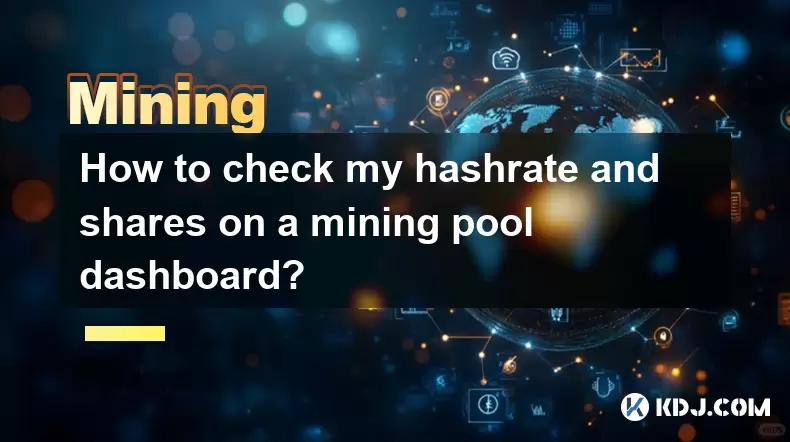
Understanding the Mining Pool Dashboard
When participating in cryptocurrency mining, one of the most critical aspects is monitoring your performance through a mining pool dashboard. This interface provides real-time data on your mining activities, including hashrate and shares submitted. Before diving into how to check these metrics, it's important to understand what they represent. The hashrate refers to the computational power your mining hardware contributes to solving cryptographic puzzles. Shares, on the other hand, are proof of work submitted by your miner to the pool, indicating that you've completed a portion of the hashing task.
To access this information, log in to the mining pool’s official website using your account credentials. Most pools offer user-specific dashboards where miners can view their performance metrics.
Tip:
Ensure your mining software is configured correctly and connected to the pool before checking your stats.Navigating to the Stats or Dashboard Section
Once logged in, locate the "Dashboard," "Stats," or "Worker Management" section. These areas typically display all relevant performance indicators. Some mining pools may label this section differently, such as “Miner Stats” or “Account Overview.” Look for navigation menus or tabs at the top or left-hand side of the screen.
- Click on the appropriate tab or link.
- Wait for the page to load, which may take a few seconds depending on server response times.
- Verify that your worker(s) are listed and active.
If your workers are not showing up, double-check your mining configuration file or command-line arguments used when launching your miner.
Locating Your Hashrate Metrics
On the dashboard, you’ll find a section displaying your real-time and average hashrate. This value is usually shown in units like MH/s (megahashes per second), GH/s (gigahashes per second), or TH/s (terahashes per second), depending on your mining hardware's capabilities.
- Real-time hashrate reflects current performance.
- Average hashrate shows a rolling average over a set period (e.g., 10 minutes or 1 hour).
- Some dashboards also provide historical hashrate charts.
The location of this data varies across platforms. For example, F2Pool displays hashrate directly under each worker name, while Slush Pool offers graphical representations over time.
Note:
If your hashrate drops significantly, it could indicate network issues or hardware malfunctions.Reviewing Submitted Shares
Below or near the hashrate section, you will find details about shares submitted. Shares are categorized into different types:
- Accepted shares: Valid shares accepted by the pool.
- Rejected shares: Invalid or late shares due to network latency or misconfiguration.
- Stale shares: Shares that arrived after a block was found.
Most dashboards show the total number of shares along with acceptance rates. A high rejection rate (typically above 1%) may suggest connection problems or unstable mining rigs.
- Check the percentage of rejected shares.
- Investigate if stale shares are consistently appearing.
- Compare accepted vs. total shares to gauge efficiency.
Some pools provide visual graphs or pie charts to illustrate share distribution.
Monitoring Individual Workers
If you're running multiple miners or have several GPUs/ASICs connected, each device is often represented as a separate worker on the dashboard. Expand or click on each worker to see detailed stats.
- View individual hashrates for each worker.
- Identify underperforming devices.
- Detect workers with high rejection rates.
Many mining pools allow you to rename workers for easier identification. For instance, labeling them as “GPU_01,” “ASIC_RIG,” or “Farm_Bay3.”
Recommendation:
Regularly monitor each worker to ensure consistent performance and detect issues early.Using Mobile Apps or Third-party Tools
Some mining pools offer mobile apps or support third-party tools like Minerstat, Awesome Miner, or Hive OS, which aggregate mining statistics from various pools. These platforms provide consolidated views of your hashrate and shares across multiple pools.
- Install the app or tool.
- Add your mining pool API keys or wallet addresses.
- Monitor metrics remotely via smartphone or desktop.
These tools often include alert systems and more advanced analytics than standard pool dashboards.
Frequently Asked Questions
Q: What should I do if my hashrate is zero on the dashboard?
A: If your hashrate reads zero, verify that your mining software is running and properly configured. Check for typos in your wallet address or worker name. Also, ensure your mining rig has internet connectivity and is successfully connecting to the pool server.
Q: Why are some of my shares being rejected?
A: Rejected shares typically result from network instability, incorrect miner settings, or outdated mining software. Review your connection to the pool, reduce intensity settings on GPUs, and ensure you're using the latest version of your mining client.
Q: Can I improve my hashrate through dashboard settings?
A: No, the dashboard only displays metrics and does not control mining performance. To improve hashrate, optimize your mining hardware settings, update firmware or drivers, and ensure stable cooling and power supply.
Q: How often does the dashboard update hashrate and share data?
A: Most mining pool dashboards refresh every 30 seconds to 1 minute. Some pools offer live updates in real-time, while others may lag slightly depending on server load and network conditions.
Disclaimer:info@kdj.com
The information provided is not trading advice. kdj.com does not assume any responsibility for any investments made based on the information provided in this article. Cryptocurrencies are highly volatile and it is highly recommended that you invest with caution after thorough research!
If you believe that the content used on this website infringes your copyright, please contact us immediately (info@kdj.com) and we will delete it promptly.
- Drake, Bitcoin, and Mainstream Music: A New Era?
- 2025-07-07 12:30:12
- Meme Coins, ROI Potential, 2025 Selection: What's Hot and What's Not?
- 2025-07-07 12:30:12
- Bitcoin, Ethereum, and Dogecoin: Navigating the Crypto Landscape in a Wild Week
- 2025-07-07 12:50:11
- Meme Coin Mania: Explosive Picks and Top Buys in 2025
- 2025-07-07 12:50:11
- Bitcoin, Ethereum, and the Cryptocurrency Market: Riding the Wave of Innovation
- 2025-07-07 12:55:12
- Elon Musk, Bitcoin, and Crypto News: A 2025 Perspective
- 2025-07-07 13:10:12
Related knowledge
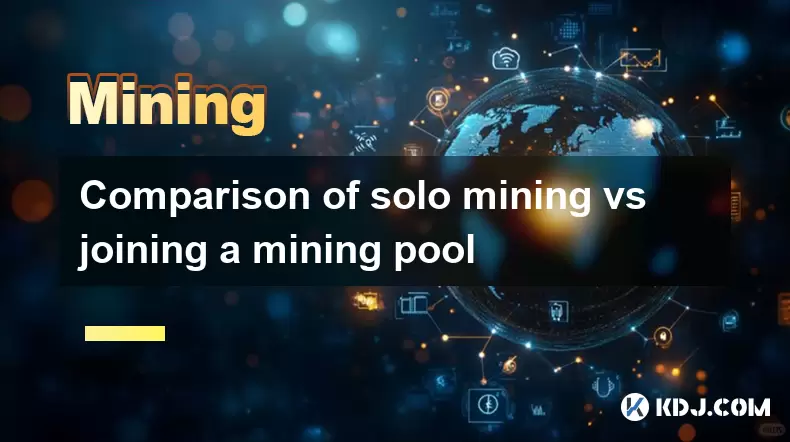
Comparison of solo mining vs joining a mining pool
Jul 05,2025 at 07:17pm
Understanding the Basics of Cryptocurrency MiningCryptocurrency mining involves validating transactions and adding them to a blockchain through computational power. Miners use specialized hardware, such as ASICs or GPUs, to solve complex cryptographic puzzles. Upon successfully solving these puzzles, miners are rewarded with newly minted coins. This pro...
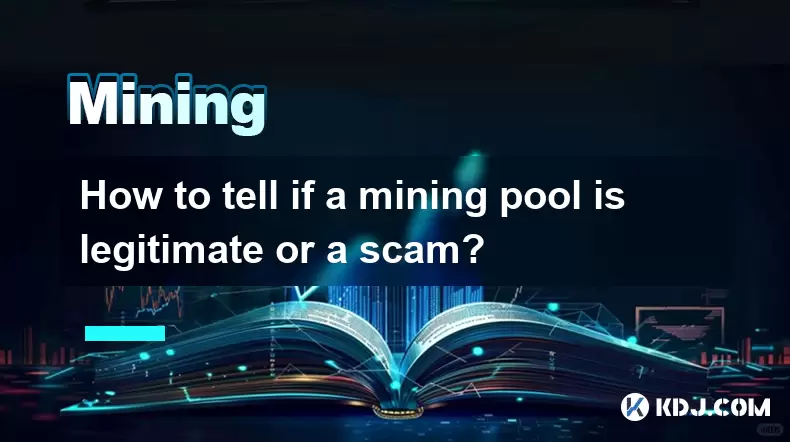
How to tell if a mining pool is legitimate or a scam?
Jul 03,2025 at 12:35pm
Understanding the Role of Mining PoolsMining pools play a crucial role in cryptocurrency mining by allowing individual miners to combine their computational resources and increase the likelihood of earning block rewards. A legitimate mining pool distributes rewards fairly, maintains transparency in operations, and has a strong community presence. Howeve...
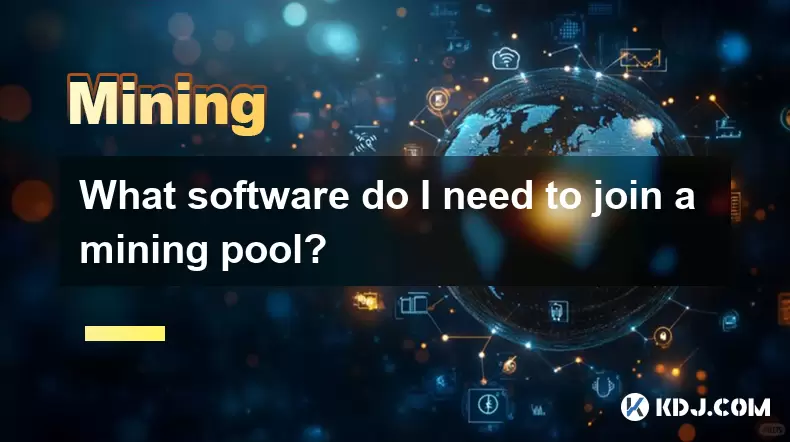
What software do I need to join a mining pool?
Jul 05,2025 at 07:32pm
Understanding Mining Pools and Their RequirementsJoining a mining pool is an essential step for many cryptocurrency miners who want to increase their chances of earning block rewards. Unlike solo mining, where you attempt to mine blocks alone, a mining pool allows multiple miners to combine their computational resources to solve blocks more consistently...
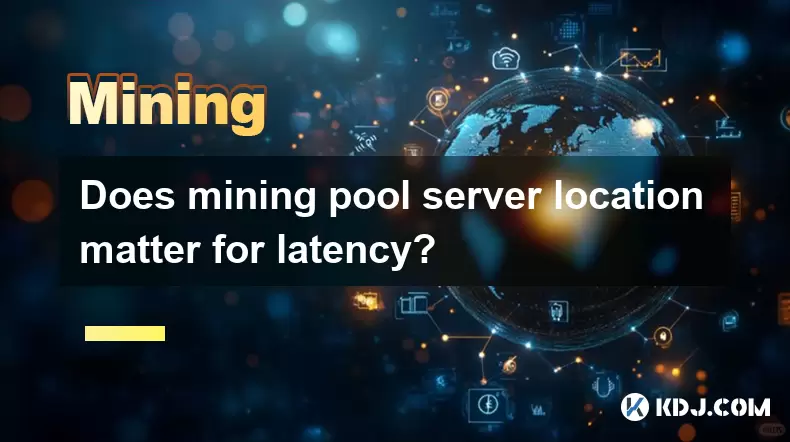
Does mining pool server location matter for latency?
Jul 06,2025 at 04:49pm
Understanding the Relationship Between Mining Pool Server Location and LatencyMining pool server location plays a crucial role in determining the latency experienced by miners during the mining process. In the context of cryptocurrency mining, latency refers to the time it takes for data packets to travel between the miner's machine and the mining pool ...
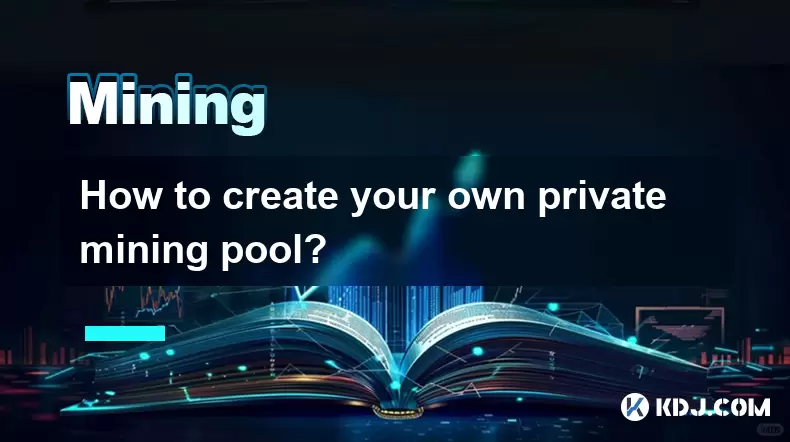
How to create your own private mining pool?
Jul 07,2025 at 02:51am
What Is a Private Mining Pool?A private mining pool is a restricted group of cryptocurrency miners who combine their computational resources to increase the probability of successfully mining a block. Unlike public pools, private mining pools are exclusive and usually require authorization or invitation to join. This exclusivity allows for better contro...
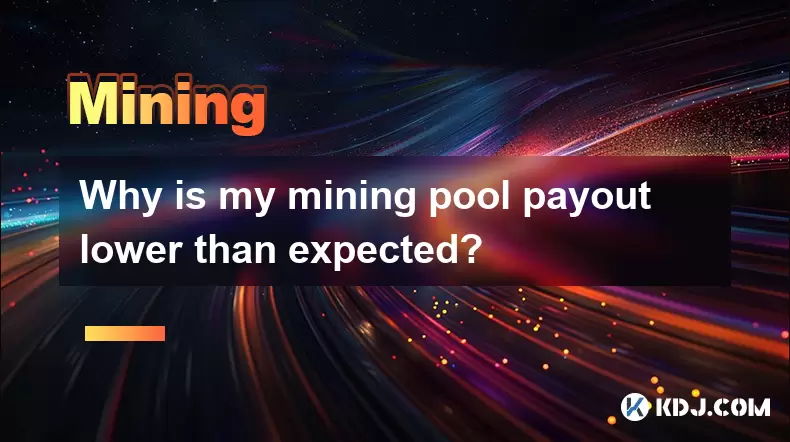
Why is my mining pool payout lower than expected?
Jul 03,2025 at 02:21am
Understanding Mining Pool Payout StructuresWhen you join a mining pool, it's important to understand the specific payout structure that the pool uses. Different pools operate under different reward systems, such as Pay Per Share (PPS), Proportional, Score-based, or Pay Per Last N Shares (PPLNS). Each method affects how and when miners receive their rewa...

Comparison of solo mining vs joining a mining pool
Jul 05,2025 at 07:17pm
Understanding the Basics of Cryptocurrency MiningCryptocurrency mining involves validating transactions and adding them to a blockchain through computational power. Miners use specialized hardware, such as ASICs or GPUs, to solve complex cryptographic puzzles. Upon successfully solving these puzzles, miners are rewarded with newly minted coins. This pro...

How to tell if a mining pool is legitimate or a scam?
Jul 03,2025 at 12:35pm
Understanding the Role of Mining PoolsMining pools play a crucial role in cryptocurrency mining by allowing individual miners to combine their computational resources and increase the likelihood of earning block rewards. A legitimate mining pool distributes rewards fairly, maintains transparency in operations, and has a strong community presence. Howeve...

What software do I need to join a mining pool?
Jul 05,2025 at 07:32pm
Understanding Mining Pools and Their RequirementsJoining a mining pool is an essential step for many cryptocurrency miners who want to increase their chances of earning block rewards. Unlike solo mining, where you attempt to mine blocks alone, a mining pool allows multiple miners to combine their computational resources to solve blocks more consistently...

Does mining pool server location matter for latency?
Jul 06,2025 at 04:49pm
Understanding the Relationship Between Mining Pool Server Location and LatencyMining pool server location plays a crucial role in determining the latency experienced by miners during the mining process. In the context of cryptocurrency mining, latency refers to the time it takes for data packets to travel between the miner's machine and the mining pool ...

How to create your own private mining pool?
Jul 07,2025 at 02:51am
What Is a Private Mining Pool?A private mining pool is a restricted group of cryptocurrency miners who combine their computational resources to increase the probability of successfully mining a block. Unlike public pools, private mining pools are exclusive and usually require authorization or invitation to join. This exclusivity allows for better contro...

Why is my mining pool payout lower than expected?
Jul 03,2025 at 02:21am
Understanding Mining Pool Payout StructuresWhen you join a mining pool, it's important to understand the specific payout structure that the pool uses. Different pools operate under different reward systems, such as Pay Per Share (PPS), Proportional, Score-based, or Pay Per Last N Shares (PPLNS). Each method affects how and when miners receive their rewa...
See all articles

























































































